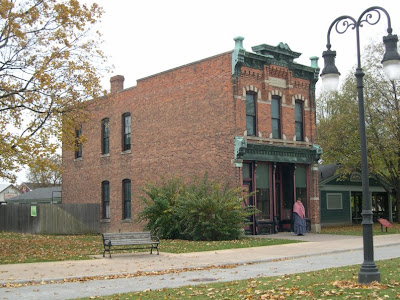Mattox Family Home (formerly known as Mattox House)
 The Mattox house was originally thought to have been constructed during the pre-Civil War days on the Cottenham Plantation near Ways, Georgia, but was found to have been built in the late re-construction era of the 1880's. It was the home of several generations of the Mattoxes, an African-American family.
The Mattox house was originally thought to have been constructed during the pre-Civil War days on the Cottenham Plantation near Ways, Georgia, but was found to have been built in the late re-construction era of the 1880's. It was the home of several generations of the Mattoxes, an African-American family. Unfortunately, most of the information I have of this home is no longer correct since the discovery of its true age. What I do have shows how this family lived during the early part of the 20th century:
Unfortunately, most of the information I have of this home is no longer correct since the discovery of its true age. What I do have shows how this family lived during the early part of the 20th century:Amos Mattox worked many jobs during the Great Depression to take care of his family. He was a farmer, a barber, a shoemaker, and a preacher.
 It was this type of resourcefulness and hard work that made it possible for the family to own and maintain this house and the land it set upon.
It was this type of resourcefulness and hard work that made it possible for the family to own and maintain this house and the land it set upon.Amos' wife, Grace, also worked, but her work helped to provide for the less fortunate in her neighborhood.
The Mattoxes were not a well-to-do family, and this home is typical of the many southern rural families of the era.
 The interior of this structure shows that very well. The walls, for instance, are lined with newspapers for insulation against the cool Georgia nights and winters.
The interior of this structure shows that very well. The walls, for instance, are lined with newspapers for insulation against the cool Georgia nights and winters. The furnishings are just as children of Amos and Grace remembered and reflects reflects their parent's tastes and interests.
The furnishings are just as children of Amos and Grace remembered and reflects reflects their parent's tastes and interests.
The home was brought to Greenfield Village in 1943.
The Mattox home is a fine representation of how a poorer southern black family lived in the earlier part of the 20th century, and shows how any obstacle can be overcome, no matter the situation.
.



Comments